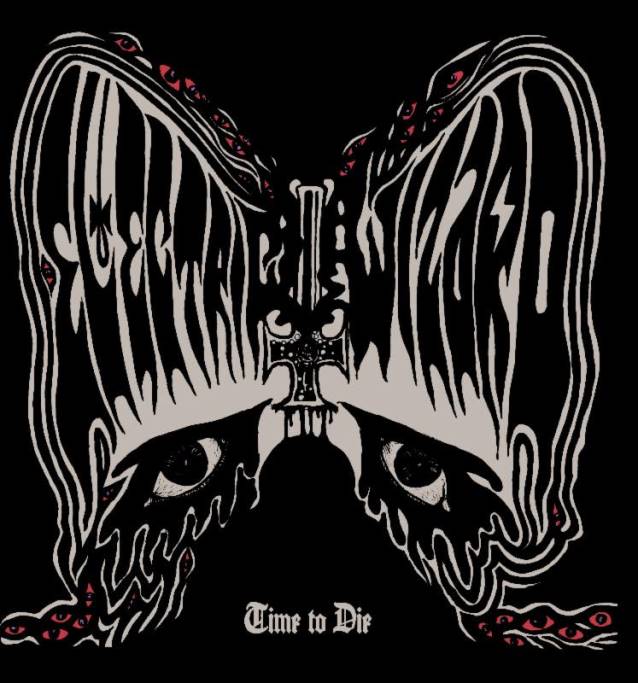British doom troupe ELECTRIC WIZARD have posted the artwork for Time to Die, the band’s new album which is due later in the year via Spinefarm Records.
Says ELECTRIC WIZARD founding member Jus Oborn: “All of our albums in the past have had a theme — revenge, drugs, black magick — and the theme of this one is death. Of course, death to us really means rebirth, so this album is a manifestation of a very primal occult belief in the final sacrifice.
“We have gone full circle — it was inevitable, but we had to do it. We had to kill the band so we could be reborn. It was the only way to ensure we could come back even stronger.”
The artwork, once again created by Oborn, is an extension of that theme; this is further solidified by the LP gatefold image, which will be revealed soon.
Formed by vocalist/guitarist Jus Oborn in 1993, ELECTRIC WIZARD — based in the U.K.’s South-West — has thus far released seven studio albums — an increasingly influential body of work recorded on vintage analogue gear with as little technology as possible intruding on the signal (“Pro Tools is for pussies!”).
Result: some of the heaviest, dirtiest, most evil-sounding audio ever put to tape, and more importantly to vinyl, with both Come My Fanatics (1997) and Dopethrone (2000) being lauded as landmark releases.
A cultural as well as a musical force, ELECTRIC WIZARD has left an indelible mark on a host of different genres, the likes of doom, stoner and sludge; at heart, however, they stand as an iconic British metal band, cast in the great tradition, with lyrics and artwork reflecting the hypnotic weight of the music, and subject to the same intelligence and detail.
Wreathed in occult ritual and drug-culture references, with classic ’70s horror an inspirational seam, ELECTRIC WIZARD is poised to turn a page; there’s the new deal with Spinefarm Records, plus — after a nine-year hiatus — the return of Mark Greening (the drummer on Dopethrone), who completes the lineup of Oborn, American guitarist Liz Buckingham, a key member since 2003, and new bassist Clayton Burgess (SATAN’S SATYRS).
Fueled by strong emotion and the harder sounds of late-’60s Detroit, the remodeled lineup — isolated by choice, giant stacks glowing red — set about crafting an eighth studio album to both rival and exceed the milestone recordings of the past, with Buckingham keeping things suitably monolithic and the band generally looking back to some of their earliest influences.
Toerag Studios in London was once again charged with capturing “The Sound,” and (encouragingly) words like “raw”, “hateful” and “sickeningly heavy” are being traded.


